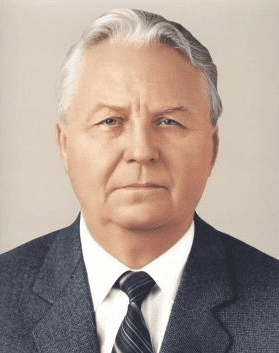1992 Leadership Crisis
This article is still under construction. Some things might be missing.
1992 leadership crisis, also known as the Black September, was a coup d'état attempt in the Soviet Union orchestrated in September 1992 by the conservative faction of the CPSU.
Background
One of many reforms conducted by Nikolai Podgorny and Alexei Kosygin in the 70's was an effort to cut military spending. Military budget has been constantly cut since the times of Khrushchev which, over a long time, started to infuriate the Soviet military command. Army's position only worsened when afore mentioned Premier and the First Secretary decided to largely expand the number of exemptions to the mandatory military service, which was planned to include much more occupations and fields, due to the higher demand for high-skilled individuals in the growing Soviet technologies sector. Despite multiple modernization and revitalization attempts commanded by the Soviet government the military's bitter frustration remained.
Disgrluntled high-ranking officers decided to ally with the Nomenklatura, which consisted of powerful, and medium-ranking, officials working for the Soviet bureauocracy. The size of bureaucracy was greatly decreased by Nikolai Tikhonov in the 80's due to the introduction of algorhitmic planning to the Soviet state mechanisms. Many officials were fired, or demoted from high ranking positions and efficient machines were put in their place. This angered the nomenklatura which pushed to hostility towards the reformist attitude of the official Communist Party line. There were many efforts and campaigns to crack down on the anti-reformist conservative faction within the CPSU which only further angered the bureauocrats.
Conservatives' discord only grew when the newly elected First Secretary of the CPSU, Eduard Shevardnadze, swore to continue the reforms of Nikolai Tikhonov. Premier Yegor Ligachyov also promised to subscribe to the reformist ideas of their predecessors, but he quickly found himself as an ally of the conservatives and an outright enemy of Shevardnadze, which he promised to work with.
As the reforms entered into the 90's, Ligachyov and other disgruntled high ranking officials, such as the Minister of Defense Dmitry Yazov and the Minister of Telecommunications Gennady Yanayev formed a secret alliance whose goal was to take down Eduard Shevardnadze in a coup and cancel all reforms.

Chronology
Lorem ipsum dolor sit amet, consectetur adipiscing elit. Integer mi dui, imperdiet ac magna a, molestie sagittis ex. Mauris blandit quis tortor eu volutpat. Donec porta maximus tellus, et molestie elit laoreet mattis. Vivamus eu ante ex. Fusce magna purus, rhoncus sed diam non, egestas porttitor metus. Sed commodo eros.
Aftermath
Lorem ipsum dolor sit amet, consectetur adipiscing elit. Integer mi dui, imperdiet ac magna a, molestie sagittis ex. Mauris blandit quis tortor eu volutpat. Donec porta maximus tellus, et molestie elit laoreet mattis. Vivamus eu ante ex. Fusce magna purus, rhoncus sed diam non, egestas porttitor metus. Sed commodo eros.
Notes
- Skibidi
